
Guests
- Arnie Gundersenformer nuclear industry senior vice president who has coordinated projects at 70 nuclear power plants around the country. Arnie provides independent testimony on nuclear and radiation issues to the NRC, congressional and state legislatures, and government agencies and officials in the U.S. and abroad. He is the chief engineer at Fairewinds Associates. Arnie co-wrote the new Greenpeace report, “Lessons from Fukushima.”
The Obama administration is backing an expansion of nuclear power plants, but have the lessons of Fukushima been learned? We speak to former nuclear industry executive Arne Gundersen on the fallout from Fukushima, the design failures of the Mark I nuclear reactor used at Fukushima and many U.S. power plants, the economics of nuclear energy and the battle over nuclear power in his home state of Vermont. Gundersen is a former nuclear industry senior vice president who has coordinated projects at 70 nuclear power plants around the country. He is the chief engineer at Fairewinds Associates and co-wrote the new Greenpeace report, “Lessons from Fukushima.” [includes rush transcript]
Transcript
AMY GOODMAN: We continue on the issue of nuclear power. On Sunday, tens of thousands of anti-nuclear protesters across the globe took their message to the streets to mark the first anniversary of the earthquake and tsunami at Japan’s Fukushima power plant. Greenpeace Hong Kong campaigner Prentice Koo was among those voicing their concerns.
PRENTICE KOO: Although no one died right now, but everyone can forecast the impact of Fukushima will last for over a decade or even a century. So for Japan, this kind of well-developed country can’t even—even they can’t handle a nuclear disaster, so it’s really a strong lesson for everyone to know that when nuclear reactors go wrong, no one can control it.
AMY GOODMAN: We are going right now to Burlington, Vermont, to speak with Arnie Gundersen, former nuclear industry senior vice president who has coordinated projects at 70 nuclear power plants around the country. Arnie Gundersen provides independent testimony on nuclear and radiation issues to the Nuclear Regulatory Commission and congressional and state legislatures, as well as government agencies and officials in the U.S. and abroad, now chief engineer at Fairewinds [Associates]. He co-wrote the new Greenpeace report, “Lessons from Fukushima.”
What are these lessons, Arnie Gundersen?
ARNIE GUNDERSEN: Well, I think the first—the first lesson is that this is a technology that can destroy a nation. I was reading Mikhail Gorbachev’s memoirs, and he claims that it was Chernobyl, not perestroika, that destroyed the Soviet Union. And as you look at the transcripts coming out of Japan, we see that the Fukushima accident was on the verge of causing the evacuation of Tokyo. And had the wind been blowing the other way, across the island instead of out to sea, Japan would have been cut in half and destroyed as a functional country. So, this is a technology where perhaps accidents don’t happen every day, but when they do, they can destroy a country.
The other things are the cost is astronomical. To fix this is going to be something on the order of half-a-trillion dollars. All of the money that Japan saved on oil over the 40 years that they’ve had nuclear plants just got thrown away in the half-a-trillion-dollar recovery effort.
And the other piece is the human issues. The health impacts to the Japanese will begin to be felt in several years and out to 30 or 40 years from cancers. And I believe we’re going to see as many as a million cancers over the next 30 years because of the Fukushima incident in Japan.
AMY GOODMAN: Arnie Gundersen, Fox News host Neil Cavuto spoke with California Republican Congress Member Devin Nunes about what would happen if a tsunami hit a nuclear reactor here in the U.S. I want to go to that clip.
REP. DEVIN NUNES: I live close to Diablo nuclear power plant over on the central coast of California, and I’ve had a lot of questions recently about that. Well, first of all, those plants are—those reactors are about a hundred feet above the sea level. So you would need well over a hundred-foot tsunami to even hit those plants. They’re actually prepared. They wouldn’t have the problem that happened in Japan.
AMY GOODMAN: Arnie Gundersen, your response?
ARNIE GUNDERSEN: They’re not prepared. The tsunami—the myth of the tsunami is that the tsunami destroyed the diesels, and had that not happened, everything would have been fine. What really happened is that the tsunami destroyed the pumps right along the ocean. It doesn’t matter that Diablo Canyon’s plant is up on a hill. The pumps have to be at the ocean, because that’s where the water is. We call that the loss of the ultimate heat sink. And the Nuclear Regulatory Commission hasn’t addressed that in the short-term issues coming out of Fukushima. Without that water, the diesels will overheat, and without that water, it’s impossible to cool a nuclear core. So, as a country, we haven’t addressed this issue of the loss of the ultimate heat sink, and we’re kicking that can way down the road, not addressing it for years to come.
AMY GOODMAN: Can you talk exactly about the nuclear plants in Japan, at Fukushima, and the nuclear plants now? Because two were just approved by the Nuclear Regulatory Commission in Georgia, despite the dissenting opinion of the chair of the Nuclear Regulatory Commission, who explicitly said we have not instituted the safeguards needed since the Fukushima disaster.
ARNIE GUNDERSEN: Well, the plants in Japan were built, actually, seismically much tougher than this plant in Georgia. If the plant in Georgia were at Fukushima, it would not have survived the earthquake, let alone the tsunami. The industry’s line is that the plants in Georgia would withstand an off-site power loss, which may be true, but the bigger problem is they—because they have an enormous amount of water on the roof, and then seismically that makes it tippy, the plants in Georgia could not have survived the incident that began the entire—the entire issue.
You know, it really boils down to money, though. These plants are something on the order of $20 billion. And it’s taxpayer-funded, because we’ve got these loan guarantees in place. So, basically, us Vermonters are guaranteeing the loan guarantees to these plants in Georgia. If it weren’t for those loan guarantees, these plants wouldn’t be built. Nuclear has gotten to the point where it’s so expensive that the new nukes are pricing themselves out of the market, if it weren’t for loan guarantees.
AMY GOODMAN: And yet President Obama himself has pushed for these new nuclear power plants, the first two in decades. The issue of these loan guarantees pushed by Republicans and Democrats, both deeply concerned about the debt, yet private industry not being able to move forward alone with nuclear power?
ARNIE GUNDERSEN: You know, left to Wall Street druthers—we subsidize their insurance, and we subsidize them on the front end, as far as their ability to build these plants. If it were up to Wall Street and this was a real capitalistic country, we wouldn’t be building nuclear. We’ve basically socialized the risks, but any profits flow to the corporations. It’s a crazy analogy.
AMY GOODMAN: The Mark I containment design that’s used in the United States and was used in Japan?
ARNIE GUNDERSEN: I’m on record as saying that we should close the 23 reactors with the Mark I design. Just three weeks before Fukushima, my wife and I were talking, and she said, “Where is the next accident going to occur?” I said, “I don’t know where, but I know it’s going to be in a Mark I design.” These containment vents prove to fail three times out of three. And the NRC’s response is, “Well, let’s make those vents better.” Well, if they just failed three times out of three, it’s hard to imagine how to make something like that better.
In addition, the fuel is stored on the roof, essentially, in unshielded, unprotected areas. And there’s more nuclear cesium-137 in the fuel pool at the plant in Pilgrim, Massachusetts, than was ever released by every nuclear bomb ever exploded in the atmosphere. So we have an enormous inventory of nuclear material way up on the roofs of these buildings, and I think it’s time to close these Mark 1s down, because of those two design features.
AMY GOODMAN: And finally, Arnie Gundersen, in your home state of Vermont, the governor is trying to shut down the nuclear power plant there but has been stopped by the company that ran it, Entergy.
ARNIE GUNDERSEN: We have a federal judge’s opinion that the state overstepped its bounds and looked at the safety of the nuclear power plant. It’s pretty clear that states can’t look at safety, and that’s NRC jurisdiction. But the position of the state, and my position, is—I was on the panel that evaluated it—we didn’t look at safety; we looked at reliability. And we made our decisions based on, do we think a plant that’s that old can be reliable in the future? The oldest nuclear plant in the world has only gotten to 47 years—
AMY GOODMAN: We have five seconds. Arnie Gundersen, I want to thank you very much for being with us, former nuclear industry senior vice president, has coordinated projects at 70 nuclear power plants, speaking to us from Burlington, Vermont.

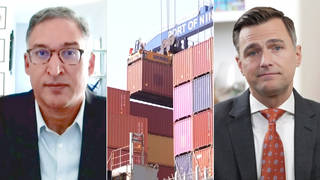
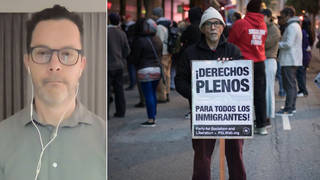

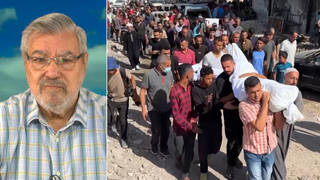
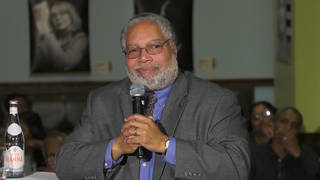


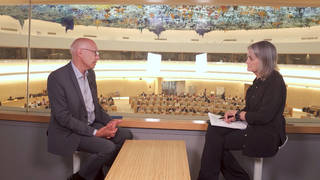

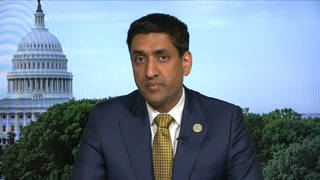

Media Options